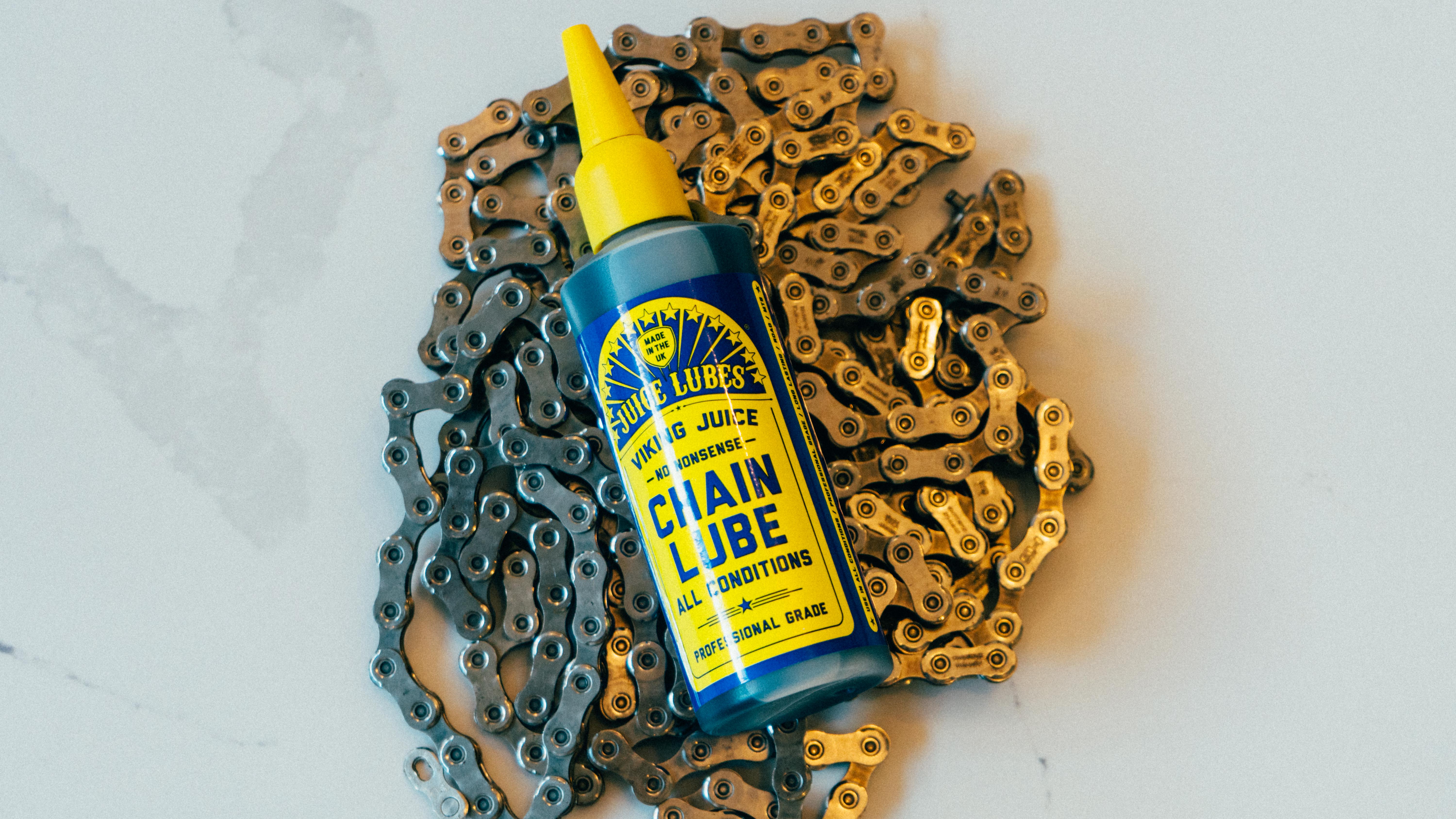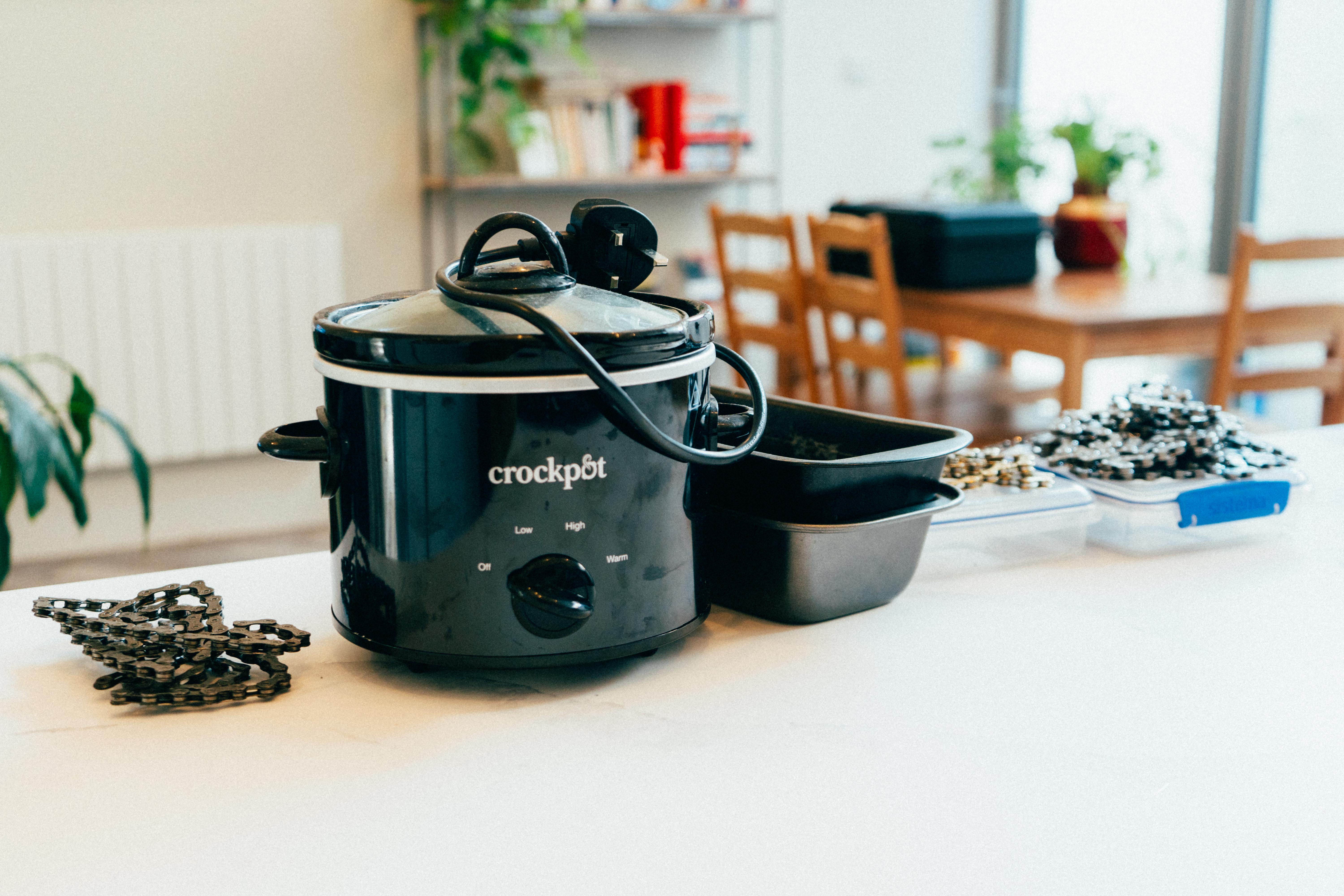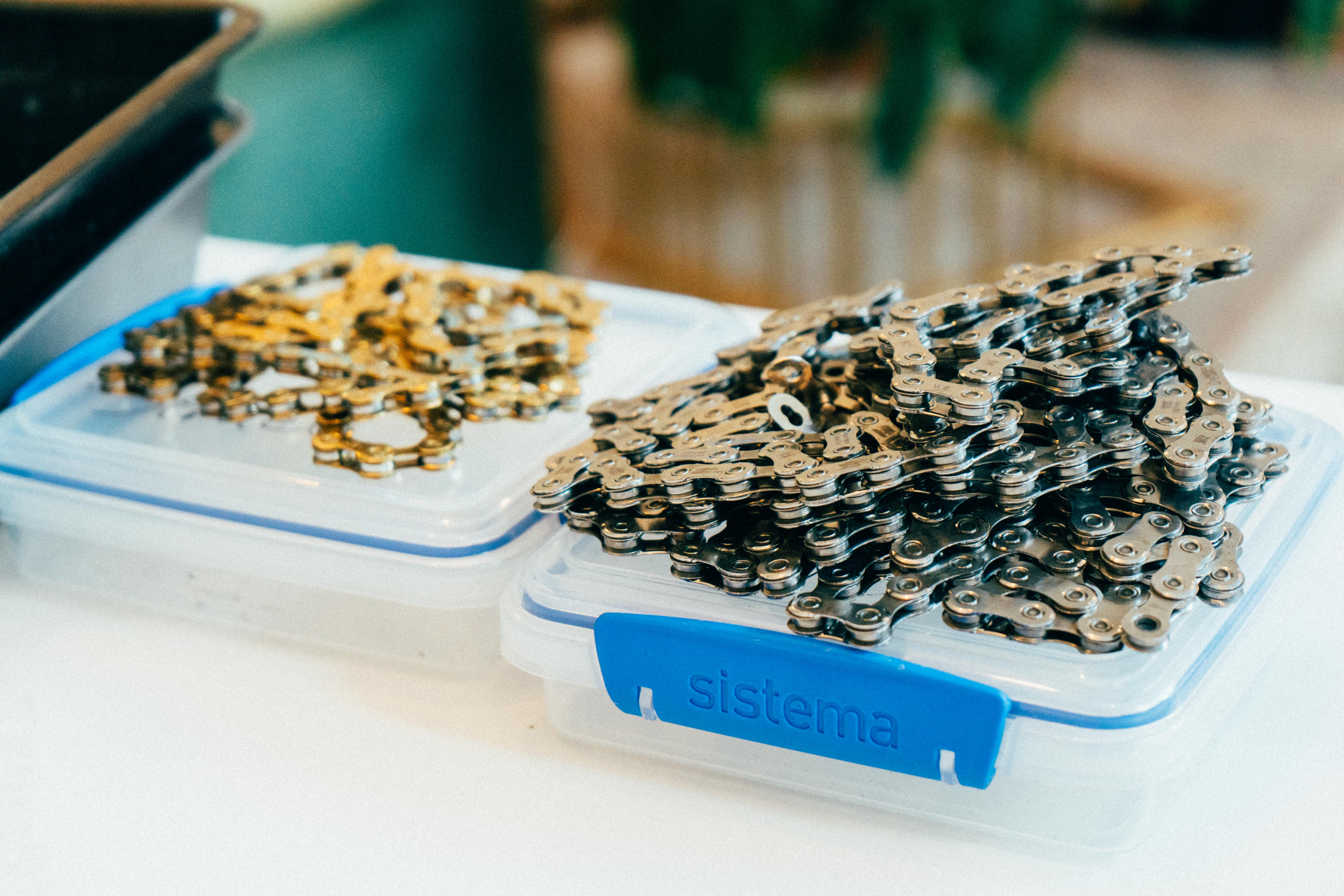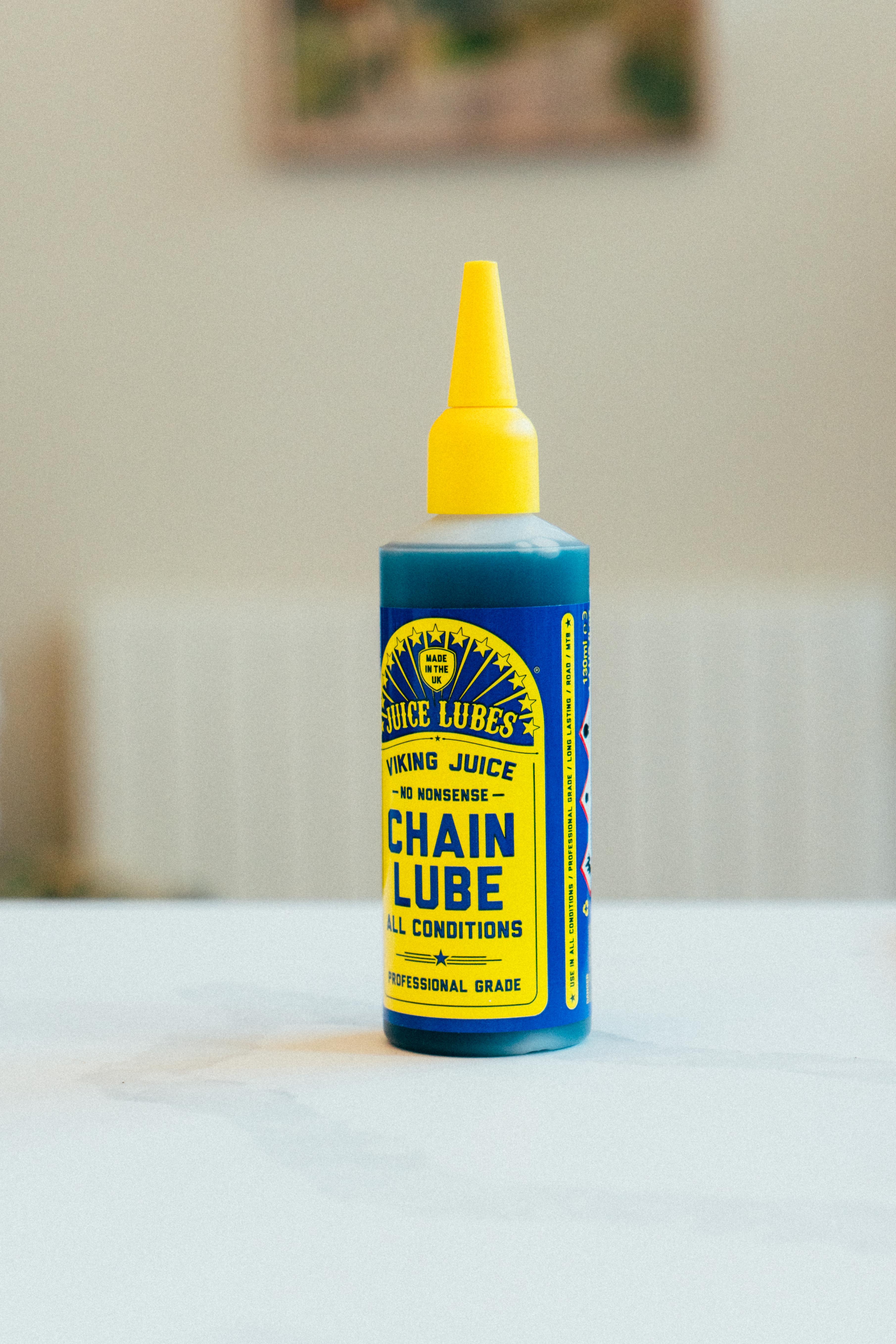After a year of waxing my chains here’s why I’m going back to oil
Time consuming, rusting, and poor wet weather performance mean I’m turning back to drip lube

At the core of my job is trying things out. Testing. Working out what works, and what doesn’t so that I can help you make more informed decisions with what you want to do with your bikes, or what gear you want to spend your money on. Technology in the bike world moves at quite a pace, and while oil-based lubricants have been around since the invention of the chain, immersion wax is now The Done Thing for performance oriented riders.
I took a while to swap over to wax. It seemed like a pain in the ass, and I was always relatively good at keeping my bikes clean anyway, but a year ago I drank the Kool-Aid, bought a slow cooker and various solvents and began my waxy journey. A year on, and many miles ridden in all conditions on both road and gravel, I remain unconvinced that the benefits outweigh the drawbacks. I’m ditching the wax and going back to drip lube, and here’s why.
If you are a drip lube fan, or want to improve your lubrication game without committing fully to an immersion wax, then my colleague Tom has put together an excellent guide to the best bike chain lube to point you in the right direction. If you already think I'm some sort of greasy luddite and waxing your chain is a hill you're willing to die on then he's also put together a sister guide to the best bike chain wax, so everyone's a winner!

It’s not easy
Waxing your chain isn’t the most onerous task in the world, but it’s certainly orders of magnitude more complicated and time consuming than cleaning and re-lubing an oiled chain. Even if you ignore the initial time cost of stripping a pair of new, factory fresh chains with white spirit and then isopropyl alcohol, maintaining waxed chains is a pain.
Say you get home from a ride and your waxed chain needs a re-wax… get the slow cooker out and get it switched on. It’s at least 45 minutes until the wax is melted, which gives you plenty of time to get the chain off the bike. You could, in the meantime, de-wax it with a couple of kettles of boiling water, before hanging it up to dry in your special “here’s where I now dry bicycle chains” section of your house. I don’t have a garage, so I do this on a long piece of 2x4 with some nails hammered into it, which lives in my cupboard.
Once your wax is melted then in goes the stripped chain, hopefully dry by this point, or the spare chain you have previously remembered to strip and dry, and then that goes up to dry in your chain drying area before leaving the slow cooker to cool down and then that can go away again. If you have a garage where you can drip wax on the floor with gay abandon it’s far less stressful, but the truth of the matter is compared to degreasing a chain, drying it with a rag, and then re-lubing it, the effort required even for the easiest wax lube is significantly more than it needs to be for most people.
This is exacerbated further if your initial jump into waxing is starting from an already dirty drivetrain, as mine was for a time. Stripping a used chain back is immeasurably more of a pain than stripping a factory fresh one, and you have to do the whole drivetrain too. On the other hand you could buy a pair of fresh chains, but that is a fair cost in itself even at the level of Shimano 105 or similar.
The latest race content, interviews, features, reviews and expert buying guides, direct to your inbox!

Poor wet weather performance
If you live in LA, Houston, or anywhere pleasantly arid most of the time, or you simply don’t care for riding in the wet then wax may actually be a really good option for you, but if you spend more than an occasional time riding in the rain then waxing really doesn’t make any sense in my book. In dry conditions I found waxed chains to be consistently pretty good, and I could get a few hundred kilometres out of each coating, which I usually then topped up with a high quality wax drip lube like CeramicSpeed UFO Drip.
Once you chuck wet conditions into the mix though things go downhill pretty fast. In wet weather with oil lube I’d get a pretty linear drop-off in performance. The chain would slowly, gradually sound dryer over quite a long duration, long enough that provided I was degreasing and relubricating after every decent length ride (say, 50km or more) it never presented me with any issues.
Wax on the other hand would drop off in performance far more rapidly. In the space of 20km I could go from the quietest, smoothest drivetrain to something that sounded like it was devoid of lubricant almost entirely. The onset of this rapid drying out was always hastened by wet conditions, but it also occurred in the dry too. The drop off in performance was about the same, it just happened sooner. As someone who enjoys a big day out, having a chain run dry 50km from home is an annoyance I could do without, both audibly and in terms of drivetrain wear.
I'm also conscious that there will be waxers out there who'll be angrily about to type "you probably didn't prep your chain properly" or "you must have done something wrong". I did, my chains were surgically clean before waxing, but even if they weren't if a bicycle maintenance system requires absolute perfection in terms of preparation, then the system itself is imperfect for the average user.
It doesn’t last long enough
The initial rigmarole of waxing should, in theory, be offset by a longer wear rate, but I never found this to be the case. I’ve seen some wax treatments offering 650km of wear before needing to be waxed again, but I never got anywhere near this before I felt like it needed either a fresh waxing, or a top up with quality wax drip lube. A fresh chain in the dry would last me around 200-300km, but as mentioned before this greatly reduced as soon as water gets into the mix.
If you’re taking on a big event, especially something multi-day where the weather isn’t a guarantee, I can’t recommend waxed chains unless you’re also prepared to take some decent wax drip lube with you like anyone with a traditionally oiled chain does anyway.

Rusty chains
Ok, let's say you do go on a wet ride with your waxed chain, ignoring the fact it is more likely to run dry more easily. You get home, pop your bike away, and head for a nice warm shower. It’s Saturday, you can strip the chain tomorrow and re-wax it then ready for the next week. It’ll be fine overnight, right? Right?
Congratulations, you now have a rusty chain.
I lost two chains down to being too wet and cold to take my chain off after a ride and get it clean and dry. Again, if you don’t spend a lot of time in the winter riding in the wet (and salt) this needn’t concern you, but for those of us who aren’t made of sugar treat this as a cautionary tale. Once a chain is rusted it’s pretty hard to get it un-rusty, and wax doesn’t particularly like sticking to powdery iron oxide.
If you’re a meticulous rider then you may well be golden with wax, but it can genuinely just be one overnight wet storage and your chain is orange. Wax evangelists will often espouse that it costs less in the long run because you spend less money over time on new parts, but this does only ring true if they stay rust free.
Wax is good, but it’s not that good
If you’re racing, or you just care about performance then waxing makes sense. It’s faster, as your drivetrain will be more efficient. Estimates vary from 2 to 8 watts or thereabouts in terms of a lovely clean waxed chain and an oiled one, which is just about enough to feel if you’re back to back testing on an identical setup.
My benchmark for this is my dynamo light, which adds 3 watts of drag when switched on I can just, and I mean just, feel that. The more powerful you are the less of a percentage these drivetrain efficiencies make, and unless you’ve already optimised your bike position (for aero gains) and your tyre setup (for rolling resistance, the second biggest cause of work) then maybe you don’t need to worry about your chain so much.

Performance isn’t just watts
As cycling, at the racing level anyway, becomes ever more data driven there is a growing tendency to equate performance purely to a wattage saving. Just because a waxed chain saves you five watts doesn’t necessarily mean it’s the right chain lube for you. Ease of living and a lack of annoyance may well be just as important for the general rider as wringing out every last watt. With the benefit of hindsight, this certainly rings true for me, and so my quest for the best chain cleaner begins now.

Will joined the Cyclingnews team as a reviews writer in 2022, having previously written for Cyclist, BikeRadar and Advntr. He’s tried his hand at most cycling disciplines, from the standard mix of road, gravel, and mountain bike, to the more unusual like bike polo and tracklocross. He’s made his own bike frames, covered tech news from the biggest races on the planet, and published countless premium galleries thanks to his excellent photographic eye. Also, given he doesn’t ever ride indoors he’s become a real expert on foul-weather riding gear. His collection of bikes is a real smorgasbord, with everything from vintage-style steel tourers through to superlight flat bar hill climb machines.